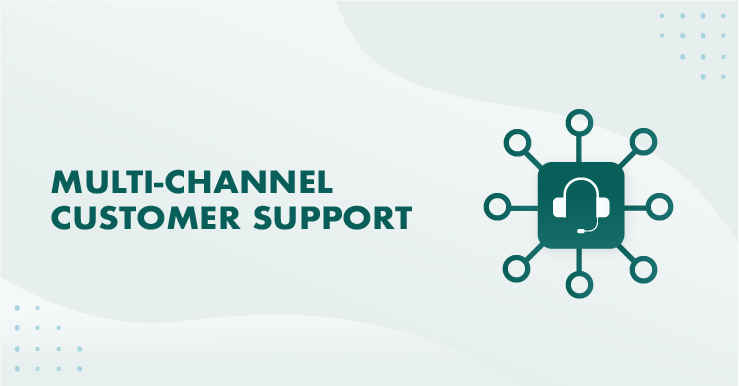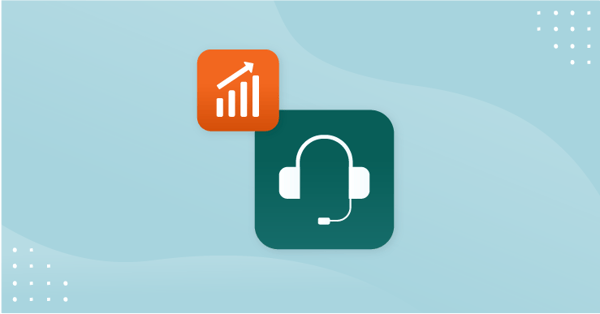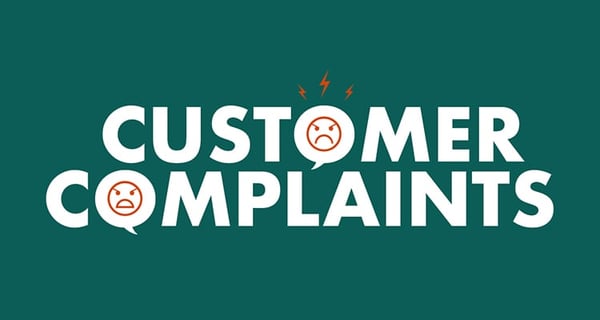Do you still think customer support is just a phone line or a ticket helpdesk?
Well, it’s time to think again.
We are deep into the era of multi-channel support.
According to research by Forrester, at least 62% of your customers want to engage with your brand across multiple support channels, and 88% of all customer support experiences now touch multiple channels.
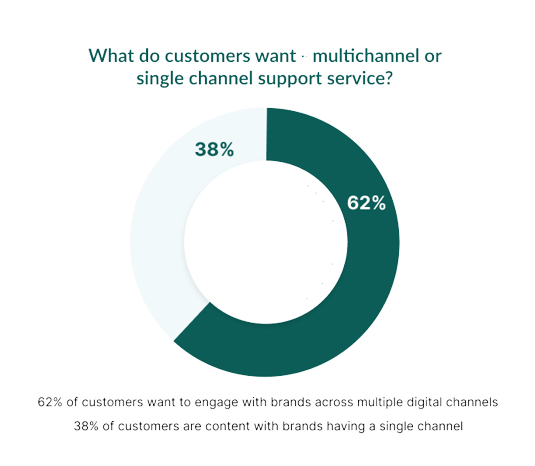
Multi-channel support isn’t just good for your customers, though. The companies that are already using it are thought to enjoy 10% year-on-year growth.
Making the effort to improve the transitions between your different support channels is also proven to have a material impact on the bottom line.
🤔 But what is multi-channel support?
What are the key benefits you can expect from offering multi-channel support? And what are some best practice tips that you can use to transform the way you support your customers?
Let’s unpack all that.
What is multi-channel customer support?
Multi-channel customer support is a strategy businesses use to enable their customers to interact with their support team in a number of ways, sometimes simultaneously.
These ways, or channels, often include a support ticket helpdesk, a phone support line, a Knowledge base, and live chat support.
🔃 These channels do not operate in isolation, though. They’re integrated together to provide your support team with a total view of the issue and offer your customer a cohesive service experience that helps them solve their issue without repetition, frustration, or wasted time.
What are the key benefits of multi-channel customer support?
To help you understand the key benefits a multi-channel system can bring, we’ve put together a table to give you an at-a-glance guide to the benefits for both your business and your customers.
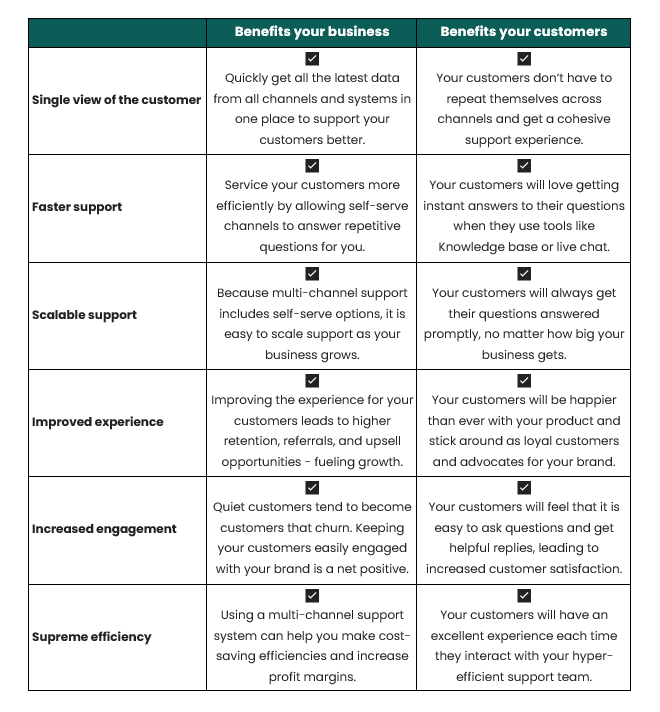
As you can see, there’s a reason why 51% of businesses are using a multi-channel approach to customer support. The benefits are huge both for the business through cost-saving efficiencies and for your customers, too.
But, how can you get started with managing multi-channel customer support?
5 best practice tips for multi-channel customer support
Let’s explore 5 key best practice tips that you can start using today.
1. Manage everything from one platform
It’s thought that companies lose at least $1.7 trillion because of poor customer service – so it’s important to get it right.
Running customer support across multiple channels can be hugely challenging if you aren’t using a single, unified customer support platform.
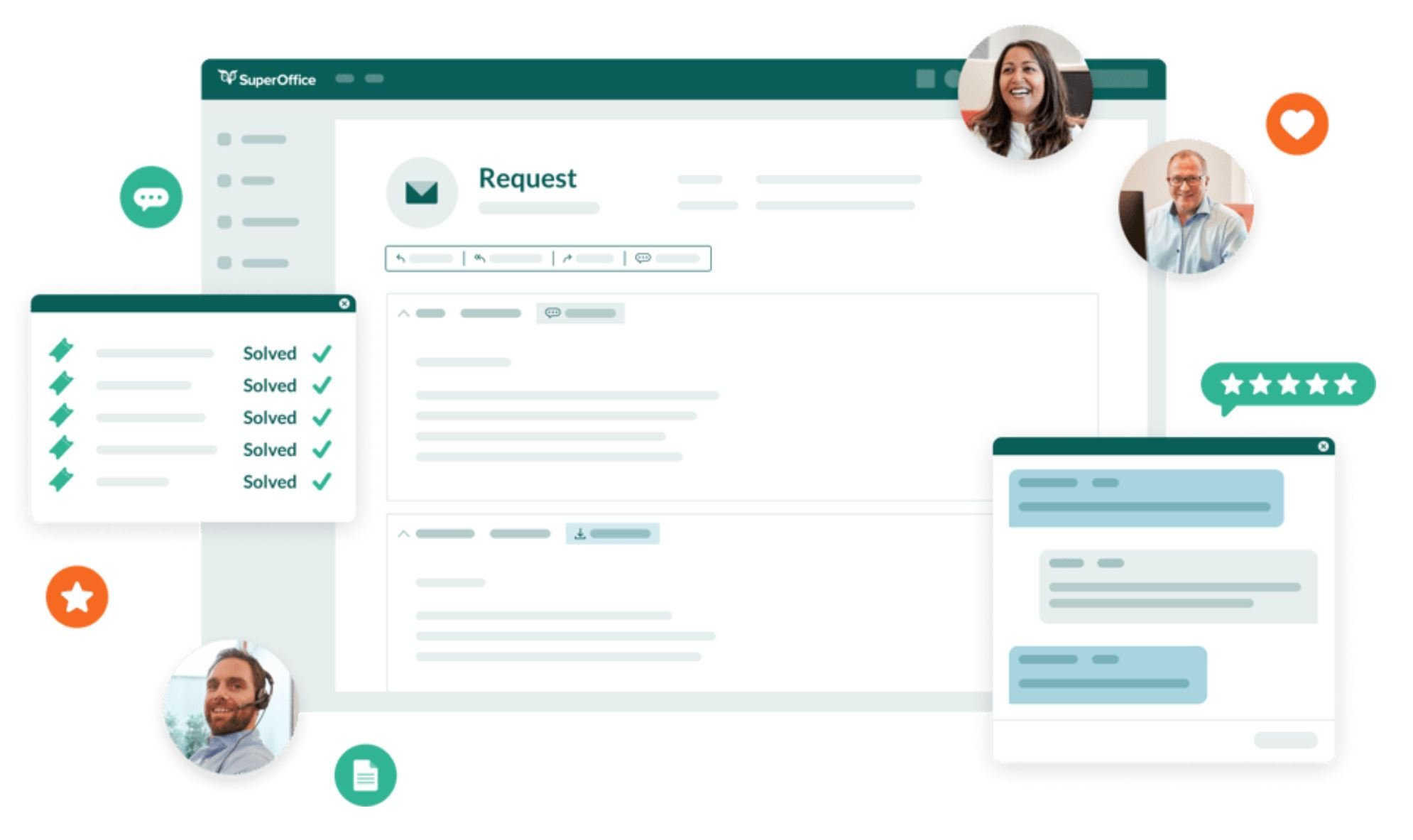
Some of the common issues you would expect to experience without a unified support platform include:
Multiple tools = multiple costs
Using different tools to manage each support channel is not only difficult to do, but it’s also not cost-effective.
Selecting individual apps to manage your helpdesk, phone line, live chat, and Knowledge base means you’re no longer paying for one piece of software – you’re paying for several, unnecessarily multiplying your costs as a result.
In contrast, a unified customer support platform has everything you need in one easy-to-use platform, available for one fixed price.
Data issues
Operating your multi-channel support across several apps isn’t just expensive – it’s also a recipe for disaster when it comes to managing customer data.
Despite your best efforts, data will get lost or siloed across multiple support apps and disconnected from your CRM, making your support reps’ jobs even harder and negatively impacting the quality of service your customers receive.
Using one single unified customer support platform eradicates this issue, as it naturally brings together all your customer data into one central location.
Difficult to monitor and track
Instead of having one tool to worry about with a single dashboard and all the data you need under one roof – using multiple support apps means you’ll be faced with:
- Running multiple reports from multiple apps, thus wasting time and effort
- Inability to produce a combined report without some serious spreadsheet wizardry
- Forcing your support team to juggle multiple tools to do their job, risking burnout
💡 Why one platform?
Put simply, using a dedicated multi-channel platform, rather than a string of individual apps, allows you to easily overcome issues around cost, efficiency, and service scalability all at once.
2. Put customer experience at the heart of every channel
One of the fundamental goals of any customer support improvement initiative should be to reduce response times – but why?
Ultimately, by reducing response times, your customers will benefit from a great experience.
This enhanced experience not only helps your customers resolve their issues quickly, but it will also help your company improve a number of other key metrics, including:
- Customer satisfaction (CSAT)
- Customer effort score (CES)
- Net promoter score (NPS) / word-of-mouth
- Increased customer retention / reduced churn
Aside from reducing response times, another way you can put customer experience at the heart of every support channel is by reducing friction.
As soon as you make things difficult for your customers, their experience will suffer.

One of the biggest perceived challenges your customers will face when using multi-channel support is the transition between channels.
All this means is that they should be able to easily move between different channels with the same login credentials and without repeating themselves.
This isn’t always the case, though. According to Gartner, currently 62% of these transitions are considered ‘high effort’ by customers.
Looking at the chart above, the impact of reducing friction and creating seamless transitions between support channels can have an enormous impact on CX metrics.
For example, the likelihood of receiving a high CSAT score from a customer goes up from 7% to 93% when friction is reduced.
By focusing on the experience your customers receive using multi-channel support, your company stands to see outsized returns as a result.
3. Use data integrations to serve customers better
One of the biggest reasons your customers will churn is because of poor quality customer service and support. In fact, 65% of customers will switch brands after unsatisfactory experiences.

Before you blame your staff or assume this is all down to individual errors, think again. This is an issue that can be easily solved with data.

One of the most frustrating things for 77% of customers is having to repeat themselves when dealing with multiple touchpoints during their customer support experience.
So, how can you solve this issue with data and deliver best-in-class customer service?
Simply by using data integrations to make sure all your customer data – everything from purchase history, support interactions across all channels, product usage, and more – is available for your customer support team in what’s called a 360-degree view of the customer.
As a result of centralizing all your customer data, your team will be able to serve your customers better than ever.
Using a 360-degree view means your customers:
- will feel listened to,
- won’t have to repeat themselves or get frustrated,
- will be left feeling satisfied by their experience.
On the flip side of this, delivering customer support will become easier for your agents, too, helping reduce stress and boost employee morale and retention rates.
So, all this goes to show that you should be using data integrations to serve your customers better 👉 and if you’re not, you’re missing out.
4. Focus on the channels your customers want to use
These days, 86% of your customers expect multi-channel support as standard.
And 70% also expect to be able to maintain the context of their discussion when shifting between channels; for example, from support tickets to phone calls.
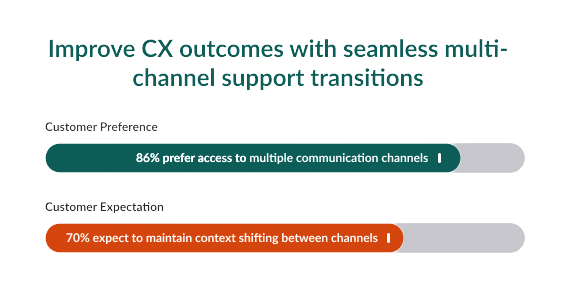
Multi-channel support gives you a variety of different ways you could deliver customer support, including:
- Live chat
- Phone support
- Ticket helpdesk
- Knowledge base
☝️ But just because you can, doesn’t mean you should!
You need to work out which channels you should focus on and, most importantly, which channels your customers actually want to use.
Currently, it is thought that 77% of customers use email and 64% use the phone to engage with customer support teams. Yet 63% of them actually prefer live chat.
Meanwhile, research based on US customer service found that when it came to getting issues resolved, 42% of customers thought the phone was the most effective, 38% preferred digital channels, and only 20% of customers relied on email.
What does the breakdown of preferred channels look like for your customers?
Before rolling out your multi-channel customer support initiative, take the time to speak to your customers and craft an offering that works for them – and not just you.
For example, it can be very tempting to put everything in a Knowledge base and completely eradicate phone support. After all, it saves costs.
However, if all your customers rely on phone support, it could be a very short-sighted move that costs you big time in customer churn.🤦
Whether you speak to each customer individually or you gather insights via a survey, first you need to find out which channels your customers prefer to use. Once you know that, simply double down on them and make the support you offer there as good as it can possibly be.
5. Use AI & automation to reduce costs and increase satisfaction
45% of customers don’t care who they interact with – it could be a support rep, a chatbot, or even a Knowledge base – as long as they get their issues resolved.
This laser focus on issue resolution by your customers presents you with an opportunity. Ask yourself: “How can we maximize the impact of our customer support while minimizing the human effort and costs required to deliver it?”
The answer is AI and automation – the secret behind highly effective customer support teams.
AI and automation can reduce support costs by up to 30%.
⚠️ But, this cost-saving isn’t done by replacing jobs!
Instead, AI and automation can be leveraged to ‘buy back’ the time of your customer support agents to help them spend more time working with your customers on high-impact issues and less time on repetitive ‘busy work’.
The key benefits of using automation and AI within your multi-channel customer support software include:
- Doing more with less by freeing up your customer support team’s time
- Reducing stress and increasing staff morale by automating repetitive tasks
- Resolving more issues in record time, making support more scalable
- Increasing satisfaction and reducing churn with an improved support experience
So, what does this look like in practical terms? Some aspects of multi-channel customer support that you could (and should) consider handling with AI and automation include:
- Prioritize, categorize, and assign tickets automatically
- Process standard tickets on autopilot
- Eliminate repetitive tasks with automation
- Help your customers help themselves with self-serve options
- Instantly translate foreign languages to support a wider customer base
It’s thought that by 2035, leveraging AI like this within your business could increase your organization’s profitability by as much as 38%.
Conclusion
By using a multi-channel customer support approach, not only will you be able to serve more customers in less time, but you’ll also increase levels of customer satisfaction too.
However, if you’re not already using multi-channel customer support in your business, it may seem like a slightly overwhelming proposition.
So, to help you start your journey with multi-channel customer support software, we looked at 5 best practice tips you can use today to get up and running in no time:
- Manage everything from one platform: using a centralized platform to control and monitor your support channels gives you a complete cross-channel view of all your customer’s engagement with support.
- Put CX at the heart of it all: make sure that regardless of which channels you use in your multi-channel support strategy, they’re all as effective as each other. Ensure that you can meet service level agreements, response times, and other important metrics to provide a cohesive and high-quality experience for your customers.
- Get the full picture with customer data: to take good care of your customers, your support team should have all the information about them, their relationship with your company, and your product. Leveraging data integrations will help you unify all that data from multiple sources to give you a 360-degree view of your customers.
- Focus on the channels your customers want to use: make sure your multi-channel support strategy is effortless for your customers to engage with. To do this, you should concentrate on operating support via the channels they actually want to use, not the ones you want to use.
- Leverage AI and automation: we’re not suggesting that you replace all your support team with AI chatbots. But you should consider how you can use automation and AI to assist your team to free up their time to focus on what they do best – helping your customers succeed with your product.
We know how important it is to have easy-to-use multi-channel support in your customer service software. That’s why we’ve built SuperOffice Service with a multi-channel focus at the heart of our product.
